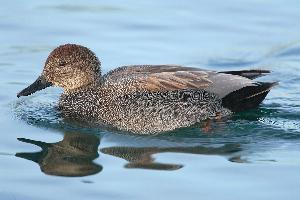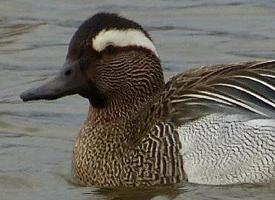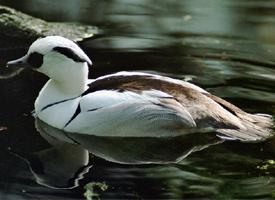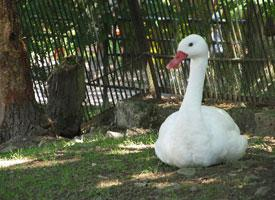
Váhy a míry
| Délka | od 46 do 56 cm |
|---|---|
| Délka rozpětí křídel | od 78 do 90 cm |
Popis zvířete
The Gadwall (Mareca strepera) is a medium-sized, dabbling duck that is often overlooked due to its understated plumage, yet it holds a quiet beauty and fascinating behaviors that make it a noteworthy species among waterfowl enthusiasts. This bird is widely distributed across the Northern Hemisphere, including North America, Europe, and Asia, making it a familiar sight in a variety of wetland habitats.Adult Gadwalls measure about 46 to 56 cm in length, with a wingspan ranging from 78 to 90 cm, and weigh approximately 500 to 1,000 grams. The males, or drakes, are characterized by their subtly elegant plumage, which at a distance appears gray but upon closer inspection reveals a complex pattern of intricate markings. During the breeding season, the drake's body is adorned with fine, scalloped patterns of gray and brown, with a black rear end that contrasts sharply with its white belly. One of the most distinctive features of the male Gadwall is its black bill, which sets it apart from many other duck species. The male's head is a darker brown than its body, and it sports a conspicuous black patch at the tail. In contrast, the female Gadwall is predominantly mottled brown, providing excellent camouflage among the reeds and vegetation of her nesting sites. Both sexes have a white speculum (a distinctive wing patch) that is visible in flight, bordered by black on the trailing edge.
Gadwalls are dabbling ducks, meaning they feed mainly on the surface of the water or by tipping forward to graze on submerged vegetation. Their diet is highly varied and includes aquatic plants, seeds, and small invertebrates, which they obtain by skimming the water's surface or by up-ending, rather than diving. This adaptability in feeding allows them to thrive in a wide range of wetland habitats, from large lakes and rivers to small ponds and marshes.
Breeding typically occurs in the spring and early summer. Gadwalls are monogamous during the breeding season, with pairs forming in the winter months before arriving at breeding grounds. The female constructs a well-concealed nest on the ground, often in dense vegetation near water, where she lays a clutch of 7 to 12 eggs. The drab coloration of the female plays a crucial role during this time, camouflaging her and the nest from predators. After a gestation period of about 25 to 27 days, the eggs hatch, and the precocial ducklings are soon able to feed themselves, although they remain under the vigilant care of their mother.
Gadwalls are migratory birds, with many populations moving southward to spend the winter in warmer climates. During migration and in their wintering habitats, Gadwalls often join mixed flocks with other species of dabbling ducks, where their unassuming appearance can make them challenging to spot among their more brightly colored companions.
Despite their widespread distribution and current status as a species of least concern, Gadwalls face threats from habitat loss and degradation, particularly in their breeding and wintering grounds. Conservation efforts aimed at preserving wetland habitats are crucial for maintaining healthy populations of this and other waterfowl species.
In summary, the Gadwall is a subtly beautiful and adaptable species whose quiet demeanor belies its importance in wetland ecosystems. Its presence across a wide range of habitats underscores the need for continued conservation efforts to protect these vital areas for the Gadwall and countless other species that depend on them.
Podobná zvířata
Nové fotografie zvířat
Top 10 zvířat
- Chinese water dragon (Physignathus cocincinus)
- Galápagos tortoise (Geochelone nigra complex)
- Dolphin gull (Leucophaeus scoresbii)
- Japanese macaque (Macaca fuscata)
- Colombian red howler (Alouatta seniculus)
- Sea urchins (Echinoidea)
- Moustached guenon (Cercopithecus cephus)
- Diana monkey (Cercopithecus diana)
- Common reed warbler (Acrocephalus scirpaceus)
- Common house mosquito (Culex pipiens)


